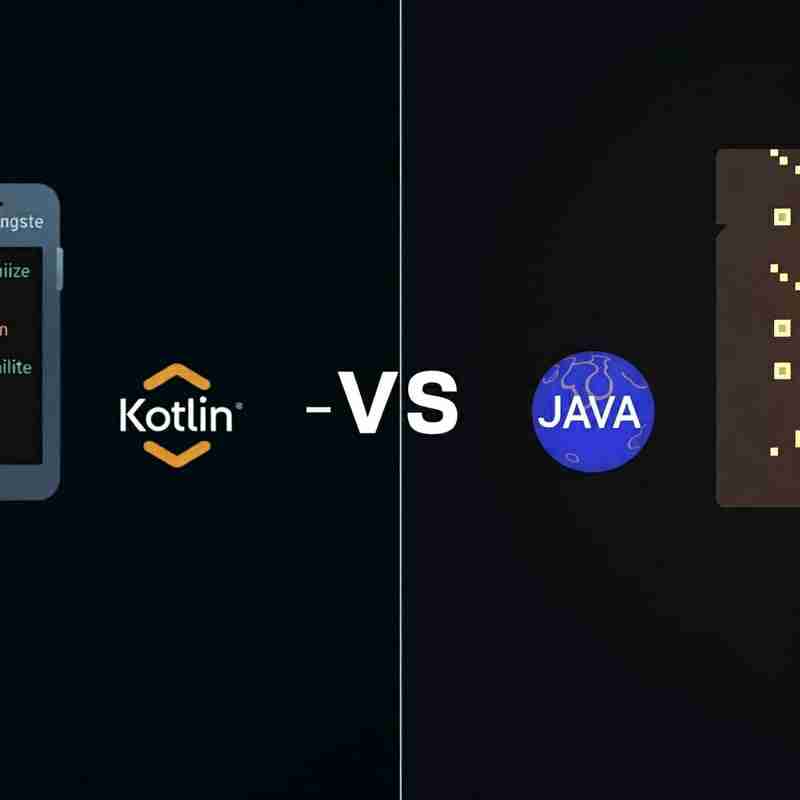Kotlin 运算符重载与 Java:数学魔术表演(Kotlin 打破规则!)
- Barbara Streisand原创
- 2024-11-11 22:01:03932浏览

想象一下,您是一位顽皮的数学家。您决定重新定义加法,因此 1 1 现在等于 3! ?在大多数编程语言中,这会导致混乱,但在 Kotlin 中,这只是办公室里操作符超载的又一天。这就像有能力重写算术规则,让它们服从你的意愿。 ➕
Java:严格的数学家
Java 是一个遵守规则的人。 、-、* 和 / 等运算符具有预定义的含义,您无法更改它们。这就像试图让 Java 编译器相信 2 2 = 5。您只会得到一个编译时错误和关于数学基础的严厉讲座。 ?
// Java int result = 2 + 2; // Java insists this equals 4
虽然这种严格性可以确保一致性,但有时也会产生限制。这就像当您需要科学计算器时却被困在一个基本计算器中一样。
Kotlin:数学魔术师
另一方面,Kotlin 允许您为自己的类和数据类型重新定义运算符的行为。这就是所谓的运算符重载,它就像拥有一根魔杖,可以改变数学符号的含义。 ✨
// Kotlin
data class Vector(val x: Int, val y: Int) {
operator fun plus(other: Vector): Vector {
return Vector(x + other.x, y + other.y)
}
}
val v1 = Vector(1, 2)
val v2 = Vector(3, 4)
val v3 = v1 + v2 // Now this adds the vectors component-wise!
通过运算符重载,您可以:
- 创建直观的 API: 让您的类以自然且富有表现力的方式与运算符交互。这就像定义您自己的数学语言! ?️
- 简化复杂操作:用熟悉的运算符表示复杂的操作,使您的代码更易于阅读和理解。这就像编写数学方程而不是冗长的方法调用。 ?
- 扩展现有类型:甚至向现有类型(例如数字和字符串)添加新行为。这就像教旧计算器新技巧一样! ?✨
Java 的对应方法:方法调用(传统方法)
在Java中,您可以通过定义具有描述性名称的方法来实现类似的功能,例如add()、subtract()或multiply()。这工作得很好,但有时会让你的代码不那么简洁和直观。这就像写“将这两个数字加在一起”而不是简单地使用符号。 ➕
// Java
public class Vector {
public final int x;
public final int y;
public Vector(int x, int y) {
this.x = x;
this.y = y;
}
public Vector add(Vector other) {
return new Vector(this.x + other.x, this.y + other.y);
}
public static void main(String[] args) {
Vector v1 = new Vector(1, 2);
Vector v2 = new Vector(3, 4);
Vector v3 = v1.add(v2); // Note the use of the add() method
System.out.println("v3.x = " + v3.x + ", v3.y = " + v3.y); // Output: v3.x = 4, v3.y = 6
}
}
结论(魔术表演结局)
Kotlin 的运算符重载提供了一种强大的方法来扩展语言并创建更具表现力的代码。这就像一场触手可及的数学魔术表演,操作员按照您的规则跳舞和变换。因此,如果您准备好拥抱 Kotlin 的魔力并重新定义算术边界,就让运算符重载开始吧! ✨
P.S. 如果您是一名仍受传统算术规则束缚的 Java 开发人员,请不要担心。您始终可以使用命名良好的方法获得类似的结果。它可能没有那么神奇,但仍然有效! ?
以上是Kotlin 运算符重载与 Java:数学魔术表演(Kotlin 打破规则!)的详细内容。更多信息请关注PHP中文网其他相关文章!
声明:
本文内容由网友自发贡献,版权归原作者所有,本站不承担相应法律责任。如您发现有涉嫌抄袭侵权的内容,请联系admin@php.cn

